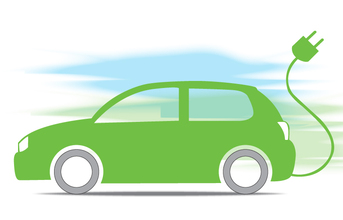

• the Chevrolet Volt, a plug-in hybrid vehicle manufactured by General Motors, which is marketed as the Opel Amprea
in Europe, Vauxhall Ampera in the UK and Holden Volt in Australia and New Zealand. The concept of the hybrid vehicle was to have a gasoline engine driving a generator
as a backup to improve the drive range, while the only mechanical connections to the wheels were from the electric motor.
• the Tesla Roadster is a pure battery power electric vehicle. It is designed as 2-door sports car by an electric car firm called Tesla Motors. The roadster has a range of 220 miles per charge and is the first road battery electric vehicle to achieve such a range. However, the cost of purchasing a roadster is high, which would lead to a low consumer demand
for the vehicle.
• the Toyota Prius is a hybrid electric vehicle. It first went on sale in Japan in 1997 and then worldwide in 2000. It was the first mass-produced electric vehicle and has gone through a lot of development to improve the design. The Prius V and Prius C are new and improved version that are available in the market now.
• the e2o produced by Mahindra Reva, India is another succeful
example of pure electric vehicle with fully charged range of 120 km and being mass produced in Platinum certified automotive facility with almost 50 percent of the energy required in operation and charging of the battery is coming from solar energy.
Hybrid Electric Vehicles (HEV)
HEVs are vehicles that use different energy sources to achieve vehicle traction. They generally combine an electric motor and an internal combustion engine is such a way to maximise the strength of each at different points of the vehicle drive cycle. The power sources can be connected in different topologies as shown in Fig 1 and the power trains work as follows:
• Series hybrid, where the ICE is used to charge the batteries for the electric motor or power the electric motor directly and the elctric motor is connected to the wheels
• Parallel hybrid, where the ICE and electric motor are connected
directly to the wheels of the vehicle in parallel and they are each sized for half of the drive power
• Series/parallel hybrid, where the series and parallel hybrid are combined to achieve the advantages of both configurations.
This has been found to be the most efficient method as it smartly switches between the ICE and electric motor to give the best and most efficient traction for the vehicle
(Continued on the next page)


























